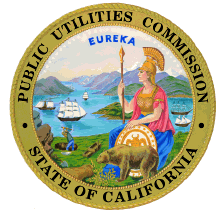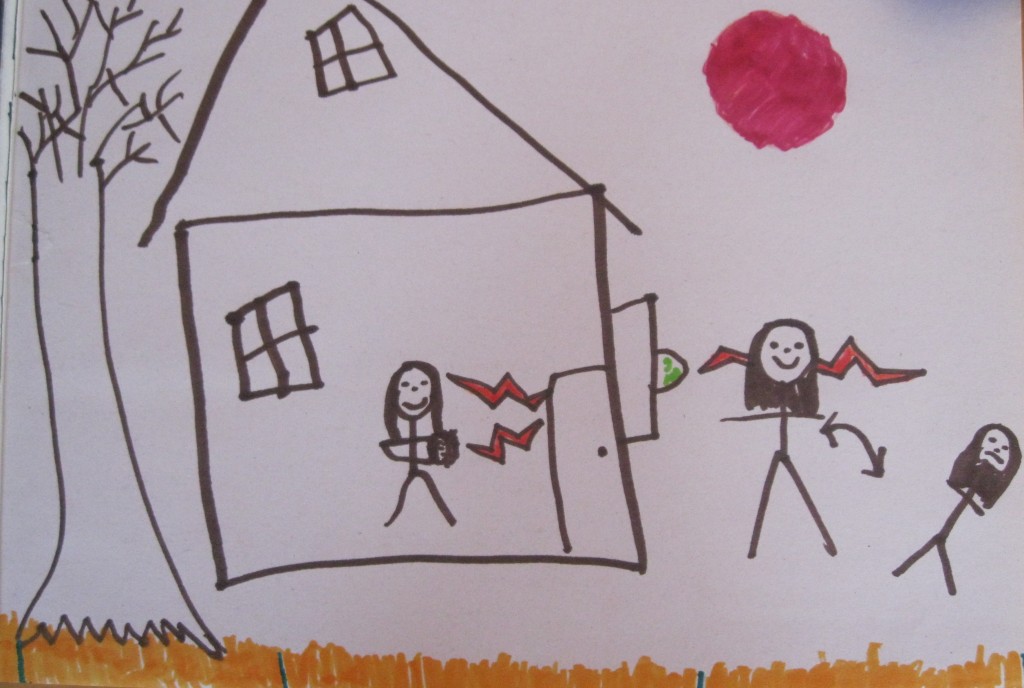 by Judy Vick, M.S., L.M.F.T.
by Judy Vick, M.S., L.M.F.T.
There should have been a customer “opt-in” to the PG&E wireless smart meter program when it was originally proposed as a primarily wired program in 2006 for 1.7 billion ratepayer dollars. Or perhaps when PG&E switched the smart meter program to wireless in 2009, when they came back to request an additional half billion dollars of ratepayer money.
A 2008 report by San Francisco Environment and the San Francisco Public Utilities Commission, cautioned that the plan to equip homes with so-called smart meters should be put off until the gadgets are proven to save money for ratepayers and be safe for the environment, echoing the criticism of reports across the country on smart meters, which said the meters’ savings don’t outweigh the costs. The report recommended PG&E first employ a pilot program of 300,000 to 500,000 test homes.
But instead, PG&E rushed ahead and “deployed” mandatory installation of wireless smart meters for all customers, regardless of the fact that wireless smart meters are not mandated by the federal government and are not a requirement of a smart grid.
Author Orlean Koehle, a prominent Republican in northern California, researched the utility companies claim that they are following federal law by mandating these installations, but when she consulted a lawyer, she found that was not the case. “Upon reading the bill (2005 Energy Policy Act), it does not mandate utility companies to install smart meters in homes; they are only to offer them and install them upon customer request,” Koehle said as she read from the lawyer’s response.
Ratepayers have now paid billions of dollars for the wireless smart meter program, money they can ill afford in this economy. And they are paying in more ways than one, with their health and wellbeing, their property, safety, and security.
The number of California local governments that oppose the smart meter program are steadily growing—40 and counting. Thirteen of these governments passed ordinances and local laws banning the meters. You have to stop and ask yourself—why is there so much resistance across California and in other states and countries over a simple utility meter?
First, smart meters don’t save energy. People save energy. The results promised by PG&E have never been demonstrated in any test or actual program done in the country. Consumer organizations such as Public Citizen, The California Public Utilities Commission Division of Ratepayer Advocates, and the Consumer Law Center have refuted PG&E’s consumer benefit claims. Public Citizen launched a national campaign to expose the faulty assumption that smart meters will save energy. Instead, Public Citizen’s analysis of the program found that smart meter installations have thus far prioritized utility budget efficiency, profiting utility companies, not household budget efficiency. “Pouring through utility dockets, utilities make it clear that the vast majority of projected savings from smart meters is from laying off utility workers—and not from consumers’ lowering their energy use and bills. Utilities highlight savings from remote disconnection—mainly for nonpayment. This raises serious consumer safety and health issues.” For this, people are paying double and triple what they used to pay for energy. And people and businesses who are unfortunate enough to not be able to avoid using energy at peak times, pay more for energy than those who do not. Residents of Bakersfield filed a class action lawsuit for excessive billing from wireless smart meters after they were installed.
Mark Toney, Executive Director of the Utility Reform Network (TURN), exposed the fact that utility companies’ critical peak pricing includes a 10 fold increase in cost for energy use during heat waves. He noted that many people die every year from heat, more than other natural disasters. How many more people will be at risk, not using energy during heat waves for fear of excessive energy bills?
Adding insult to injury, in addition to the program not delivering on promised benefits, electrical fires, appliance damage, and interference with existing household electrical systems have been reported from smart meter installations. And a government report revealed that the smart meter system will be easy for hackers to remotely shut off power and cause widespread outages. The security weaknesses could also allow hackers to snoop on customers and steal data. A paper out of the University of Cambridge highlights privacy concerns from smart meters as well as security risks caused by linking home-area networks from smart meters.
But at the forefront of the heightened resistance to the wireless smart meter program, is the fact that people are getting sick. There is regular testimony at the California Public Utility Commission from people who report injuries from wireless smart meters and are demanding an end to the smart meter program. For every person testifying at the CPUC, there are many others writing the CPUC and their elected officials for help. You can read personal account after personal account on emfsafetynetwork.org. Many of these people have never been activists, but are getting involved to protect themselves, their families, and their communities. They are spending their personal time attending city council and county board meetings, walking neighborhoods, writing letters to their elected officials, going on local radio and television stations to try to stop this harmful program. Those who are especially dedicated are physically blocking contractors from installing the wireless meters and devising ways to prohibit their analog meters from being removed from their property. Meanwhile, PG&E airs radio spots promoting the benefits of the meters and continues installations at a rapid pace.
There are significant and unnecessary health problems from wireless smart meters identified by dozens of scientists. The microwave radiation (also referred to as electromagnetic radiation, emf, and radiofrequency radiation) emitted from the meters is harmful to health, causes DNA breakages and a myriad of symptoms. Our bodies are bio-electric, as measured by EKGs and EEGs. Interference from microwave radiation can alter the electrical activity which regulates the function of our hearts, brains and other organs. Heart rhythm disturbance, sleep disruption, and headache are some of the common symptoms.
Additionally, 3-5 % of the population is considered electrically hyper-sensitive and 30-35% of the population is moderately sensitive. In Sweden, electrohypersensitivity (EHS) is an offically fully recognized functional impairment. Electromagnetic radiation also interferes with sensitive medical equipment and medical implant devices. 8-10% of the population have medical implant devices, such as insulin pumps, cochlear implants and heart pacemakers.
The Seletun Scientific Statement (2011) recommends that global governments adopt new exposure guidelines for electromagnetic radiation—pointing to biological hazards and risks to the genetic code from unchecked proliferation of wireless technologies. The recommendation is based on scientific studies reporting health impacts at much lower exposure levels. Many researchers now believe the existing safety limits are inadequate to protect public health because they do not consider prolonged exposure to lower emission levels that are now widespread.
Other countries have recognized the problem of emf exposure from wireless technology and are returning to wired systems. The European Environment Agency, an agency of the European Union that advises 32 countries on public policy, is calling for lowering public exposure to electromagnetic fields: “Waiting for high levels of proof before taking action to prevent well known risks can lead to very high health and economic costs, as it did with asbestos, leaded petrol and smoking.”
The California Department of Public Health (CDPH) recently acknowledged health effects from low level, “non-thermal (non-heating)” emf exposure: “CDPH suggests further review of the literature on non-thermal effects, which is complicated and controversial, but does not support a claim of no non-thermal health effects from radio frequency electromagnetic fields.”
Daniel Hirsch, Professor of Nuclear Policy at University of California, explains that the whole body cumulative radiation exposure from wireless smart meters is 100X more than cell phone exposure. He adds that the wireless smart meter program deployment “is a large experiment on a very large population.”
The problem with the wireless smart meter individual opt-out, is that it does little in the real world to protect public health, unless most of us opt-out. Wireless smart meters are mounted in close proximity to our every day lives, attached to our homes and businesses, and places where we spend a lot of our time. Many people report their utility meter is mounted on the exterior side of their bedroom wall, and often in places easily accessed by children. Wireless smart meters emit electromagnetic pulses for more than a mile in every direction, and the signals go through walls and our bodies. If you choose to opt-out—but your neighbor doesn’t, you are still exposed. If you opt-out but you live in a condo, and share a wall that mounts 15 smart meters for your condo neighbors, how can you protect yourself and your family? If you opt-out, but live by a smart grid repeater station for your neighborhood, you can do little to reduce your exposure. In addition, we are experiencing a growing accumulation of electromagnetic radiation in our environment from cell towers, wifi, cell phones, electronic equipment, etc.
The CPUC chose to exempt the wireless smart meter program from an environmental impact report, the type of review that is usually required of such a massive state-wide program. So the burden of proof regarding harm has shifted to the consumer. But it shouldn’t be. The CPUC needs to take responsibility to protect consumers and our environment now, by calling for independent testing and evaluation of the wireless smart meter and the smart grid. In the meantime, there should be a moratorium on any further installation of wireless smart meters from any utility company (smart meters are planned for water, gas and electric meters), until PG&E can prove the wireless meters are safe. And we should demand evidentiary hearings on wireless smart meters
As it is proposed, the PG&E Opt-Out plan is a $270 up-front fee to opt out, a $14 monthly surcharge and a yet-to-be determined “exit fee” if you move. The opt-out costs are prohibitive for many individuals and families, which is PG&E’s intention, to try to stop the widespread and growing opposition to the wireless smart meter program.
Enough. Ratepayers should not be penalized for the failure of the smart meter program. It is PG$E’s turn to pay. PG&E should restore analog meters at no cost to customers. Consider that PG&E has profited from customers who have paid twice and three times their regular energy bills since their wireless smart meters were installed, and from laying off meter readers. Additionally, PG&E should be required to pay reparations to ratepayer-victims who suffered ill health, fires, explosions, damage to existing electronics and/or theft of personal information due to forced smart meter installation.
PG&E just announced a compromise that will be filed with the California Public Utilities Commission 4/26/11. It is an agreement to honor customers who do not already have a smart meter and request one not be installed, until the California Public Utilities Commission has clearly defined the final opt-out plan and has allowed you time to opt out. You need to call PG&E at 1-866-743-0263 to request that PG&E not install a smart meter. The CPUC could take 5 months or more to finalize an opt-out program. After the opt-out program is in place, PG&E will contact you to determine whether you still want to opt-out, given the final opt-out plan.
Customers who still have an analog meter, should be able to keep it at no charge. There should be no additional monthly fees to have an analog meter. PG&E can estimate usage based on the prior year, or customers can self-read and report monthly by phone or email. A meter reader can check twice a year so that any underage or overage can be adjusted. Or, meter readers should keep their jobs and let them continue to read meters.
It took a long time to make the connection between cigarettes and lung cancer, with the tobacco industry obstructing the truth. We should not make the same mistake again.
This article originally appeared in the SLO Coast Journal
Judy Vick is the EMF Safety Network representative for San Luis Obispo County. She has a master of science degree in psychology from California Polytechnic State University, and has worked as a licensed psychotherapist in public service for 15 years. Since 2005, she has led community efforts to stop installation of cell tower projects planned for neighborhoods in San Luis Obispo County. She has trained with Wellstone Action and EMILY’s List on grassroots campaign strategies. As a delegate to the CA Democratic State Convention, she personally appealed to former President Bill Clinton on the public health hazards of electromagnetic radiation (EMF). Currently, as the EMF Safety Network Representative for San Luis Obispo County, she is leading the public education campaign on wireless smart meters. As a result, the San Luis Obispo County Board of Supervisors and the SLO County Health Commission voted unanimously to oppose the installation of smart meters in SLO County, until the public has viable opt out options.




